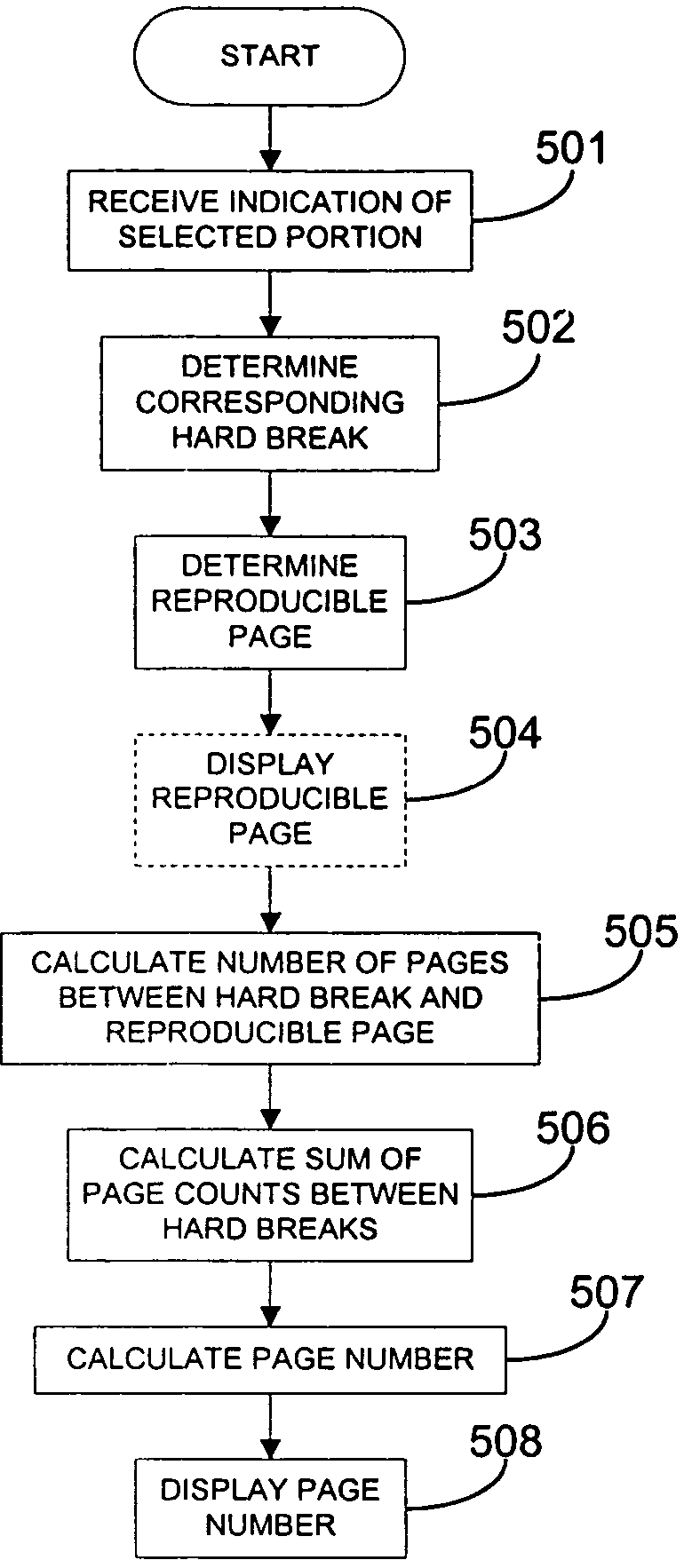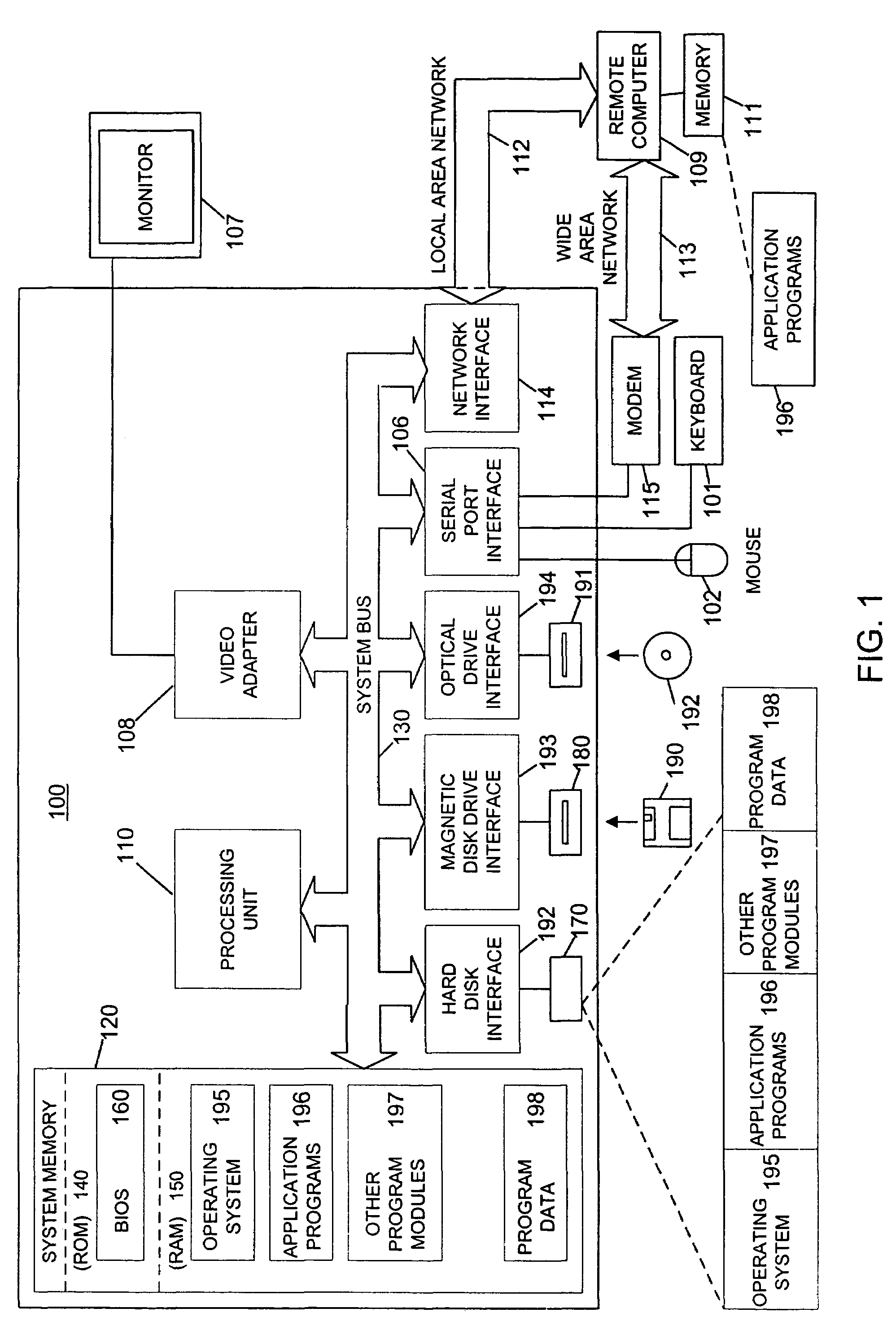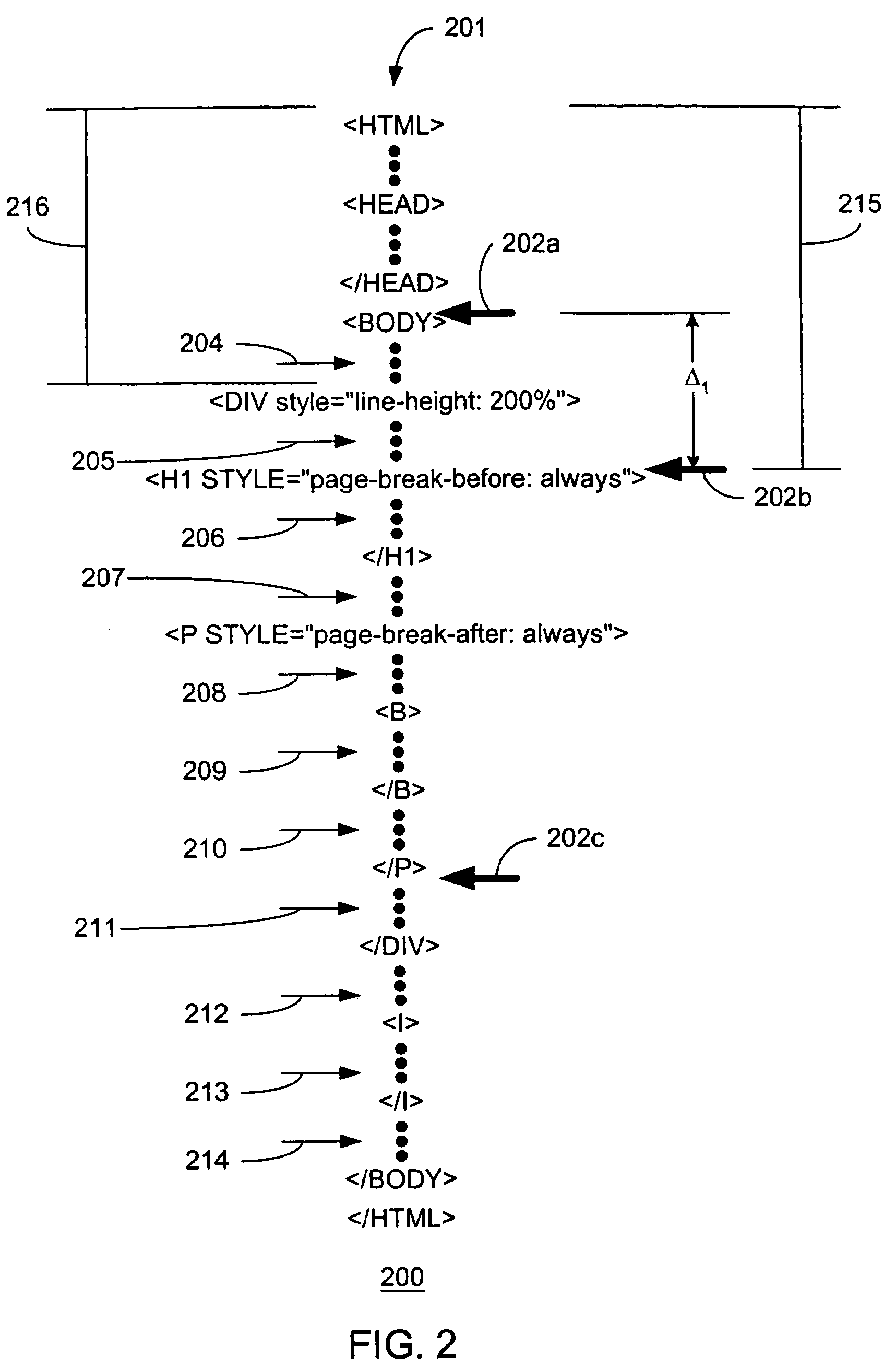Document pagination based on hard breaks and active formatting tags
a document and active formatting technology, applied in the field of electronic document display, can solve the problems of inability to support the use of page numbers, document of significant length (such as a novel) is often likely to take a significant amount of time to complete, and page number data embedded in this manner would no longer be accurate in the event of the document being displayed. , to achieve the effect of efficient and timely
- Summary
- Abstract
- Description
- Claims
- Application Information
AI Technical Summary
Benefits of technology
Problems solved by technology
Method used
Image
Examples
Embodiment Construction
[0017]The present invention may be more fully described with reference to FIGS. 1–5. FIG. 1 is a schematic diagram of a conventional general-purpose digital computing environment (including handheld computing devices) that can be used to implement various aspects of the invention. Computer 100 includes a processing unit 110, a system memory 120 and a system bus 130 that couples various system components including the system memory to the processing unit 110. System bus 130 may be any of several types of bus structures including a memory bus or memory controller, a peripheral bus, and a local bus using any of a variety of bus architectures. System memory 120 includes a read only memory (ROM) 140 and a random access memory (RAM) 150.
[0018]A basic input / output system (BIOS) 160 containing the basic routines that help to transfer information between elements within the computer 100, such as during start-up, is stored in ROM 140. Computer 100 also includes a hard disk drive 170 for readi...
PUM
 Login to View More
Login to View More Abstract
Description
Claims
Application Information
 Login to View More
Login to View More - R&D
- Intellectual Property
- Life Sciences
- Materials
- Tech Scout
- Unparalleled Data Quality
- Higher Quality Content
- 60% Fewer Hallucinations
Browse by: Latest US Patents, China's latest patents, Technical Efficacy Thesaurus, Application Domain, Technology Topic, Popular Technical Reports.
© 2025 PatSnap. All rights reserved.Legal|Privacy policy|Modern Slavery Act Transparency Statement|Sitemap|About US| Contact US: help@patsnap.com



